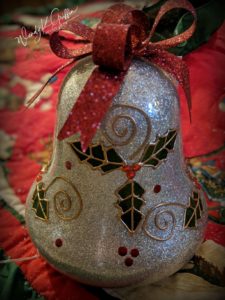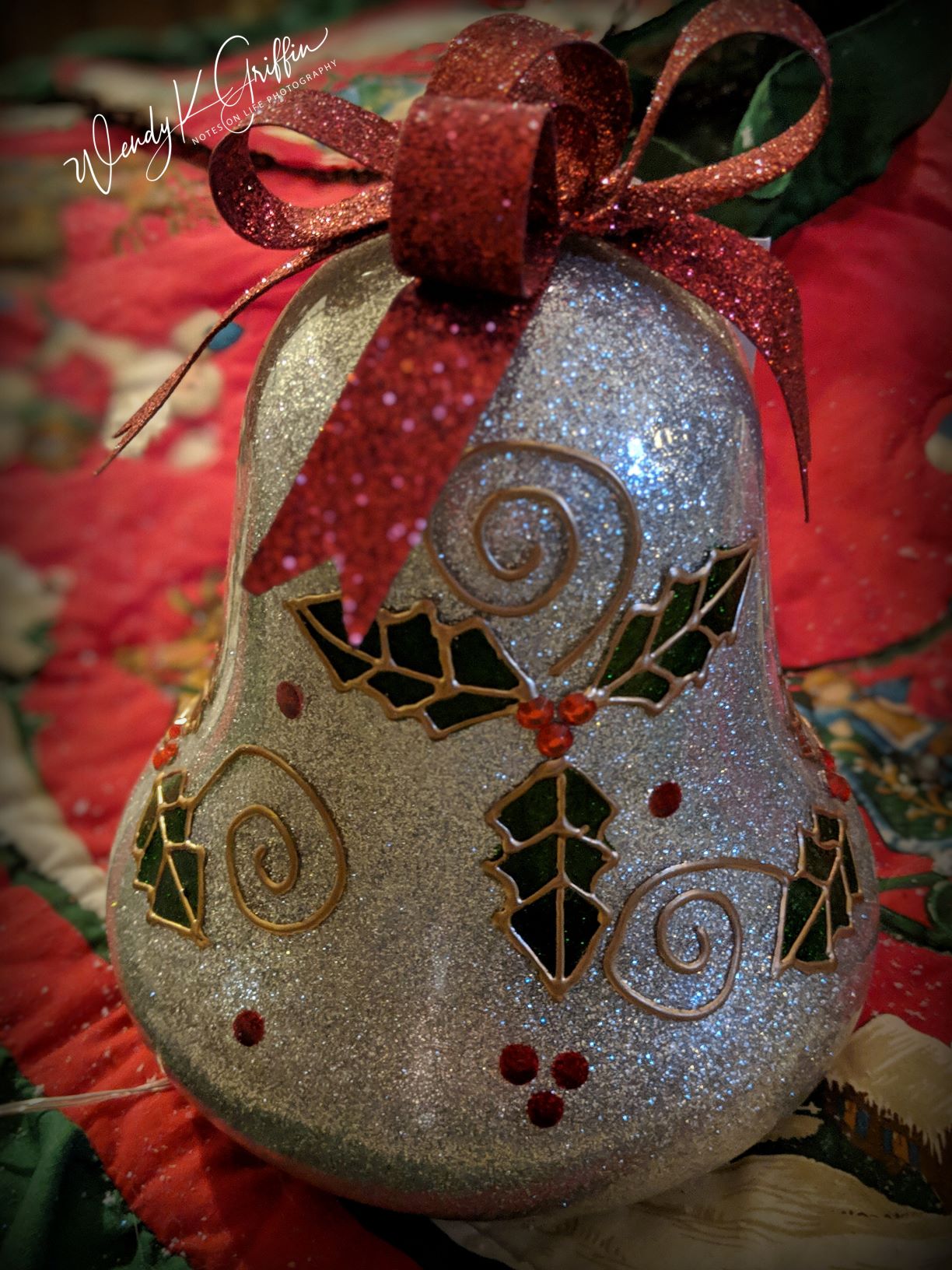
“Ring-a-ling” (ornament in my Great Aunt’s home)
“Ring the bells that still can ring. Forget your perfect offering. There is a crack in everything. That’s how the light gets in.” ~Elizabeth Edwards
The truth in this quote is beautiful and brutal simultaneously, or as one of my favorite authors, Glennon Doyle would say, “brutiful”. I have adopted this term without apology, and use it often. It is extremely accurate in so many circumstances, and this one is no exception. The importance of showing up has never been more significant than in this brutiful year of our Lord and Savior 2020. Good Grief! This is not an exaggeration. This year has been a challenge, to say the least, but it has provided us with a plethora of opportunities to see the cracks…and the light they let in. Opportunities to show up and practice things like kindness and grace. To show up for each other, and also for ourselves. To practice new skills like navigating the mute button in Zoom meetings, properly following the arrows in the grocery store aisles, and even old skills like cooking and doing dishes all the live long day, EVERY day because you’re the only one who cooks in your house and someone always needs to eat something…am I right? We can probably agree there are many others, but for me personally, none more difficult than practicing presence over perfection. The key word being “practicing” because that skill takes work. A lot of it. Daily. I mean…it’s hard. But we can do hard things.
In reading Ms. Edwards’ words multiple times and genuinely considering the meaning, it occurred to me that the reason it speaks to me so loudly is because I am a self inflicted perfectionist. Raise a hand if you identify? I have long lived by the idea that if it’s worth doing, it’s worth doing well – thanks, Dad for that little gem. I mean…it’s absolutely true, but holy cow does it ever bind you to an exhausting standard! Add to that, a Type A personality with control issues, the inexplicable need to NOT disappoint people, an irrational fear of failure (yes, they go hand in hand), and well…hello, have we met? This award winning recipe for procrastination is worthy of every Psychology major’s Pinterest board, and probably a text book somewhere. For real, y’all. So back to the practicing I go…presence, not perfection. Like letting your son help decorate the Christmas tree WITHOUT moving a single ornament he placed, even if they are all in one section and the rest is bare. Heavy sigh. Let me reiterate – this work is hard. But I’m convinced it’s that way by design. I am figuring out that writing this stuff down seems to be a balm for the cracks in my bells – oh yes, cracks; plural. Simply acknowledging that there is a crack in everything helps. We are all ringing bells with cracks in them, and we should continue to do so. Admitting that those cracks are likely what make our individual sound unique in the bell choir of life is a bit more challenging, and knowing when to ring them anyway, or stop and repair them to keep the music in tune takes practice. It appears to be a cycle – like the same playlist on repeat – but as we get older, our individual parts in the sheet music versions of those songs get a little more complicated. I hate to waste good analogies…where my band/choir geeks at? I digress…

Kintsugi Image (Pinterest – Photo credit: unknown)
As I was working through this very post, I was reminded of another kind of practice I read about once called Kintsugi. I could only remember the theory so I had to use the Google – I included a link for you in case you were interested. “Kintsugi is the Japanese art of putting broken pottery pieces back together with lacquer dusted with gold, silver or platinum — built on the idea that in embracing flaws and imperfections, you can create an even stronger, more beautiful piece of art.” This practice dates back to the 15th Century. As a philosophy, it treats breakage and repair as part of the history of an object, rather than something to disguise. I think breakage and repair as part of our history as people is something we take for granted. I get it…embracing one’s flaws is not super high on anyone’s to do list. I am certain that it is exactly as difficult as it sounds, and likely to create more cracks if we aren’t careful about the process. It must be highly delicate and tedious work. And also, if done correctly it blocks the light that was getting in, right? Therein lies the dichotomy. Cracks are necessary for light to enter. Light illuminates flaws. Yet creating something stronger and more beautiful from brokenness (our flaws) is exactly the point, is it not? In revisiting both the quote about bells, and this ancient practice, I think filling the cracks with those specific metals is the answer. They are reflective materials. So while we are repairing and strengthening our own cracks, we can reflect light to others who may need it. It becomes a part of our history and strengthens who we are, going forward. Instead of it being a flaw to disguise, it is now a lovely scar that bears witness to our transformation. One that, when the light catches it just right, will reflect light back into the cracks of our world. Perhaps letting someone else know they are not alone with their own scars; that the cracks in their bells are not just normal, but a necessary and lovely part of our song. I’m no philosopher, so you know…maybe I’ve just completely confused two very different theories, but I am going to run with it because it makes sense to me, and it reminds me that perfection is not the ultimate goal. At the end of the day, that’s the reminder I need to show up for my people, cracks and all. Practice makes progress, my friends, so ring the bells! We can do hard things.





0 Comments